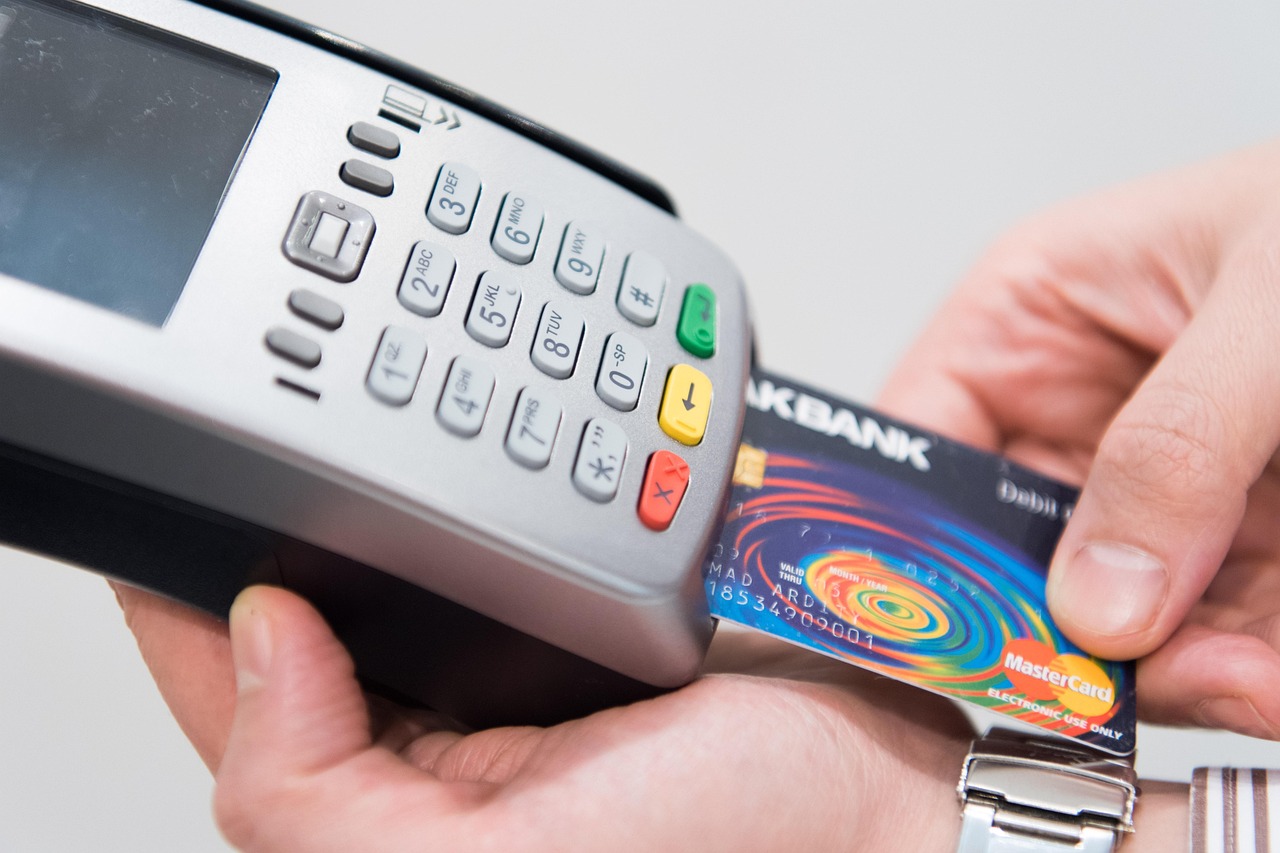Beginner Dropshipping Mistakes and Practical Ways to Fix Them in 2025

Have you ever considered why so many dropshipping businesses fail to endure? Nearly 90% of dropshipping ventures close within their first year. This highlights some common dropshipping pitfalls that many newcomers face. Only 10% of dropshippers manage to succeed in their initial year. Many people embark on dropshipping with hopes of getting rich quickly, but frequent dropshipping pitfalls such as selecting poor products and neglecting customer care often lead to disappointment. Everyone makes mistakes, but recognising and addressing these dropshipping pitfalls can help you outperform the competition.
Key Takeaways
Dropshipping takes work every day and lots of patience. Fast success does not happen often and is not likely.
Pick your niche with care by checking demand, rivals, and product quality before you sell.
Work with good suppliers, order samples, and have backup suppliers. This helps you avoid late orders and bad products.
Sell only a few products that you have studied well. This saves money and helps you sell more.
Set prices that pay for all your costs and show your product’s value. Do not price too low or too high.
Make your website clear, quick, and easy to trust. It should be simple to use and give honest facts.
Build good customer relationships with helpful support and clear rules. Ask for reviews to help your shop.
Check your shop’s results often and grow your business slowly. This helps you avoid big errors.

Dropshipping Pitfalls
Unrealistic Expectations
Overestimating Ease and Speed
Some people think dropshipping is easy money. They believe they can open a shop, choose products, and get rich fast. This is a big dropshipping pitfall. Dropshipping needs hard work and time. You must look after your shop every day. You answer questions from customers. You also check on your suppliers.
Tip: Dropshipping needs you to work daily. You cannot just set it up and leave it.
If you want quick results, you may feel let down. You might quit before you see success. Most dropshippers who do well spend months learning and testing. They try different products and learn how to market. They also build trust with their customers. About 90% of dropshipping businesses fail because people expect fast wins without planning or effort.
Ignoring Business Complexities
Dropshipping seems simple at first. But there are many things to handle. You must talk to suppliers and deal with shipping times. You also help customers and manage returns. Many people ignore these business complexities. They fall into dropshipping pitfalls.
Here are some things you might miss:
You do not control how good the products are or how fast they ship.
There is lots of competition and profits are small.
You need a clear plan for your business or you may waste money.
If you skip these steps, you could make bad choices and lose money. Always set goals that make sense. Do your research and be ready to change plans. This helps you avoid problems and build a business that lasts.
Over-Researching, No Action
Have you spent weeks reading guides and watching videos? Maybe you compare products but never start your shop. This is called analysis paralysis. It is a common dropshipping pitfall. You might feel stuck because you want everything perfect before you begin.
Here’s how to move forward:
Work on the most important jobs, like opening your shop and making ads.
Know your first try will not be perfect. You can fix things later.
Use simple tools like Trello or Asana to track your work.
Note: Doing something is better than waiting for the perfect time. You can change your plan as you learn.
Taking small steps helps you learn faster. You will not get stuck in endless research.
Poor Product Research
Picking the wrong products is a big dropshipping pitfall. If you sell things people do not want, you will get unhappy customers. If your supplier sends bad products, people will return them. This means you get bad reviews.
Let’s see what happens if you do not research products well:
Problem | What Happens to Your Business? |
|---|---|
More returns and unhappy customers | |
Misleading product descriptions/photos | Customers feel tricked and leave bad reviews |
Slow shipping or damaged packaging | Frustrated buyers and more refunds |
Wrong orders from suppliers | More complaints and lost trust |
To stop these problems, you should:
Check supplier ratings and reviews. Look for 4.7 stars or higher and few disputes.
Use Pinterest, Google Trends, and AliExpress Dropshipping Center to find good products.
Use more than one way to research. Find products people want.
Tip: Good product research keeps customers happy. It also means fewer returns, which helps your business last.
If you research well, you will do better than other dropshippers. You will build a stronger business.
Wrong Niche Choice
Choosing the wrong niche is one of the most common dropshipping pitfalls. You might feel excited about a product or trend, but if you pick a niche with too much competition or low demand, your shop can struggle. Many beginners jump into popular areas like phone cases or skincare, thinking they will sell fast. In reality, these niches are often oversaturated. You end up fighting for attention and lowering your prices just to make a sale.
If you pick a niche with thousands of sellers, you will find it hard to stand out. Your profit margins shrink, and you spend more on ads just to get noticed.
Let’s look at what happens when you choose an unprofitable or crowded niche:
You face intense price competition. You must keep lowering your prices, which means you earn less.
Customers see many similar shops. They do not remember your brand, so you get fewer repeat buyers.
You pay more for advertising because everyone wants the same customers.
Shipping bulky or fragile items costs more and leads to unhappy buyers if products arrive damaged.
Perishable goods can spoil during delivery, causing refunds and bad reviews.
You can avoid these dropshipping pitfalls by picking your niche carefully. Here’s how you can do it in 2025:
Research the market. Make sure your niche has enough buyers and steady demand.
Use tools like Google Trends and Facebook Ads Library to spot what people want.
Check online marketplaces. Look for niches with fewer than 1,000 listings and not too many active stores.
Avoid fragile, bulky, or restricted products. These bring extra costs and risks.
Read customer reviews. Find out what people dislike about current products, then offer something better.
Calculate your profit margins. Include all costs, such as shipping, returns, and marketing.
Test your niche with a small batch of products for 30-60 days. See if people buy and if you make money.
Choose products that last, have low return rates, and do not cause legal problems.
Niche Selection Criteria | Why It Matters |
|---|---|
Low competition | Easier to stand out |
High demand | More sales opportunities |
Durable products | Fewer returns and complaints |
No legal issues | Less risk for your shop |
Repeat purchase potential | Steady income |
You do not need to chase every trend. Instead, focus on what you know and what your audience wants. Niches like pet supplies, baby products, and health & beauty are growing, but you must check if they fit your skills and interests. Automation tools can help you keep up with trends and manage your shop more easily.
Tip: Run small tests before you commit. This way, you avoid wasting money and time on a niche that does not work.
Picking the right niche helps you build a strong brand and loyal customers. You will avoid many dropshipping pitfalls and set yourself up for success.
Supplier Issues

Unreliable Suppliers
It may seem simple to find a supplier, but not all are honest. If you pick unreliable suppliers, your business can have problems. Orders might be late or not as described. Sometimes, you might even get fake items. Customers will complain, and your shop’s reputation will fall quickly.
Look out for these warning signs:
Reviews that look fake or are not consistent.
Not willing to show business documents.
Asking for full payment first with no refund or exchange.
Product listings that do not match what you get.
Long shipping times and stock often running out.
Prices changing suddenly for no reason.
Sending products that are not like the samples or are worse.
Fake business details or prices that seem too low.
If you see any of these, find a different supplier. Always order samples before selling. Check their reviews and business information. Good suppliers answer questions fast and give clear details. They keep stock steady and prices fair.
Tip: Make a list of trusted suppliers. Test them with small orders before using them for your main products.
Over-Reliance on Suppliers
If you use only one supplier, your business could be in danger. If that supplier runs out of stock or has shipping issues, your shop will have delays. Customers might leave bad reviews, and you could lose sales.
You can lower this risk by using more than one supplier. Here’s how:
Do not use just one supplier for your best-selling products.
Find backup suppliers for each product. This way, you can still send orders if one supplier fails.
Check supplier reviews and past work before you start.
Stay in touch with your suppliers. Ask about stock and shipping often.
Use platforms that help you manage orders from many suppliers.
Having more than one supplier keeps your shop running well. You can also compare prices and get better deals. If one supplier has a problem, you can use another and not upset your customers.
Lack of Quality Control
Quality control is very important in dropshipping. If you do not check product quality, you might send bad items to customers. This causes returns, refunds, and bad reviews.
Set clear rules for quality with your suppliers. Tell them what you want for every product. Use tracking tools to watch your orders and spot problems early. Order samples often to make sure quality stays good.
You can also:
Use help desk tools to get customer feedback and see patterns.
Have a backup supplier ready if your main one gets worse.
Make sure your suppliers have quality certificates and good training.
Handle returns and complaints with clear, automatic rules.
Note: When you focus on quality, customers trust you more. They are more likely to buy again and tell friends about your shop.
By picking good suppliers, spreading your risk, and checking quality, you help your dropshipping business do well in 2025.
Poor Supplier Relationships
You might think your supplier is just someone who sends out your products. In reality, your supplier is a key partner in your dropshipping business. If you ignore this relationship, you could face late deliveries, poor product quality, or even lost orders. These problems can upset your customers and damage your brand.
Building a strong relationship with your supplier helps you avoid these headaches. When you work well together, you get better service, faster problem-solving, and sometimes even special deals. So, how do you build a good partnership with your supplier in 2025? Here are some simple steps you can follow:
Keep communication clear and regular. Always set clear expectations about product details, prices, shipping times, and returns. Check in with your supplier at least once a week. This helps you spot issues early and keeps everyone on the same page.
Be honest and transparent. Share your business plans and any changes that might affect orders. If you have a problem, talk about it right away. This builds trust and makes it easier to solve problems together.
Pay on time. Suppliers appreciate prompt payments. When you pay quickly, you show that you are reliable. This can lead to better service and more trust.
Respond quickly to messages. If your supplier emails or calls, try to reply as soon as you can. Fast replies keep things moving and show that you value their time.
Be polite and friendly. A little kindness goes a long way. Use polite language and thank your supplier for their help. Good manners can make your supplier more willing to go the extra mile for you.
Give suppliers enough time. Do not rush your supplier with last-minute orders. Plan ahead and give them plenty of notice. This helps them deliver on time and reduces mistakes.
Share updates and feedback. Let your supplier know how their products are doing. Share customer feedback and sales trends. This keeps them engaged and helps them improve their service.
Solve problems together. If something goes wrong, work with your supplier to fix it. Do not blame them right away. Instead, look for solutions as a team.
Tip: Treat your supplier like a business partner, not just a vendor. When you build trust and respect, you both win.
If you follow these steps, you will find that your supplier is more likely to help you when you need it most. Strong supplier relationships mean fewer surprises, better products, and happier customers. In dropshipping, that can make all the difference.
Product and Pricing Mistakes

Too Many Products
You might think that offering loads of products will help you make more sales. In reality, having too many products can actually hurt your shop. When you spread your marketing budget across lots of items, you waste money on products that rarely sell. Your ads become less effective, and your conversion rates drop.
Here’s what happens when you offer too many products:
You waste money on ads for products that do not convert.
Underperforming products drain your budget unless you pause their ads or lower bids.
Managing all products in one campaign makes it hard to control your spending.
You need to check product performance every week to see which ones deserve more investment.
Too many products without proper organisation make your shop harder to manage and reduce your ability to optimise for sales.
Tip: Focus on a smaller range of products. Group them into categories and monitor their performance. Pause ads for items that do not sell well. This way, you save money and make better decisions.
Underpricing
Setting your prices too low might seem like a good way to attract customers. However, underpricing can quickly eat into your profits and make your business unsustainable. You need to cover all your costs, not just the price you pay your supplier.
To avoid underpricing, try these strategies:
Add up every cost: supplier fees, shipping, transaction charges, packaging, and handling.
Use cost-plus pricing. Add a markup to your total costs so you always make a profit.
Check what your competitors charge, but do not copy them blindly.
Set prices based on what your customers are willing to pay, not just on costs.
Adjust your prices as the market changes. Use dynamic pricing to stay competitive.
Show shipping costs clearly to avoid surprises at checkout.
If you sell internationally, work with local suppliers or optimise delivery to keep costs down.
Avoid price wars. Offer value, like free shipping or bundles, instead of slashing prices.
Note: Pricing tools can help you track costs and adjust prices automatically. This keeps your margins safe and your shop running smoothly.
Overpricing
Charging too much for your products can be just as risky as underpricing. If your prices are too high, customers will look elsewhere. You might see fewer sales and lose out to shops with better deals.
Overpricing limits your customer base and shrinks your market share.
You lose your edge against other sellers with lower prices.
If your product quality or service does not match the high price, your brand image can suffer.
Premium pricing only works if you offer top quality and excellent service, like fast shipping or personal support.
High prices often mean you need to spend more on branding and marketing, which increases your costs.
Tip: Find a balance. Research your competitors and listen to your customers. Make sure your prices reflect the value you offer. If you want to charge more, give your customers a reason to pay extra—like better service or unique features.
Ignoring Hidden Costs
You may think you know all your costs when you set prices. Many new dropshippers forget about hidden costs. These costs can lower your profits and even turn a good product into a loss. If you miss them, you might wonder why your money does not match your sales.
Let’s look at the hidden costs you should watch for:
Shipping and handling fees: These can change quickly, especially with overseas suppliers. Sometimes, shipping costs go up without warning. If you offer free shipping, you pay these fees yourself.
Platform and payment processing fees: Every sale has a small fee from your ecommerce platform or payment processor. These add up fast if you sell many cheap items.
Returns and refunds: Not every customer keeps their order. You may need to pay for return shipping or restocking. Sometimes, you lose the profit from a returned item.
Customer service expenses: Answering questions and fixing problems takes time. If you hire help or use automation tools, you must pay for those too.
Marketing and advertising: Running ads, working with influencers, or paying for SEO all cost money. You need to plan for these if you want to grow.
Inventory management issues: Sometimes, your supplier runs out of stock or stops selling a product. If you sell something you cannot deliver, you risk refunds and bad reviews.
Quality issues from cheap suppliers: Low-cost products can mean more returns and bad reviews. You might even get account suspensions. This hurts your brand and costs you money.
Shipping delays: Late deliveries upset customers. You may need to offer refunds or discounts to keep them happy.
Tip: Always add up every possible cost before you set prices. Use cost-plus pricing to make sure you cover everything, not just the product.
You can use automation tools to help. These tools update your prices when supplier costs change. They also help you track profit margins and break-even points. If you want to stay ahead, watch your competitors and use dynamic pricing tools. This way, you can change your prices as needed and avoid nasty surprises.
Here’s a simple table to help you remember the main hidden costs:
Hidden Cost | Why It Matters |
|---|---|
Shipping & Handling | Directly affects your profit margin |
Platform Fees | Eats into every sale |
Returns & Refunds | Can wipe out profits on some orders |
Customer Service | Time and money spent on support |
Marketing | Needed to drive traffic and sales |
Inventory Issues | Lost sales and unhappy customers |
Quality Problems | More returns and bad reviews |
Shipping Delays | Damaged trust and lost repeat buyers |
If you plan for these hidden costs, you protect your profits and build a stronger business. Never guess your costs. Always check the numbers and update your prices when things change. This habit will help you avoid surprises and keep your dropshipping shop healthy in 2025.
Website and User Experience

Poor Design
Your website is like your shop window. If it looks messy, people will leave quickly. Many beginners forget that first impressions matter a lot. If your site looks unprofessional, visitors will not trust you. You need a clean design that works on computers and phones.
Let’s look at how design problems affect your shop:
Website Design Issue | Impact on User Trust and Conversion Rates |
|---|---|
Slow Website Speed | Makes visitors annoyed and leave. Fewer people buy. Even one second slower can mean fewer sales. |
Poor User Experience (UX) | If your site is confusing or hard to use on phones, people leave. You get less engagement and fewer sales. |
Weak or Confusing CTAs | If buttons are unclear, shoppers do not know what to do. You lose sales. |
Complicated Checkout Process | If checkout is hard, people give up. Every extra step means you might lose a sale. |
Lack of Trust Signals | If you do not show reviews or security badges, people worry. They do not buy, so you get fewer sales. |
You want visitors to feel safe and sure. Add things like customer reviews and security badges. Show clear return policies. Make your call-to-action buttons easy to see. Help shoppers know what to do next. Keep checkout simple. If you add too many steps, people may leave.
Tip: Always check your website on a mobile phone. Most people shop on their phones. Your site must look good and work well everywhere.
Slow Loading
No one likes waiting for a slow website. If your pages take too long, people leave before seeing your products. For dropshipping shops, if your page loads in two seconds, only a few visitors leave. If it takes three seconds or more, many more leave. On mobile, even more people leave if your site is slow.
A study found that shops loading in one second get more sales. Shops that load in five seconds get fewer sales. Every second matters. If your site is slow, you lose sales and waste money on ads.
Here’s how to make your site faster:
Use smaller pictures and compress images.
Pick a fast hosting provider.
Remove apps or plugins you do not need.
Use a simple theme without lots of effects.
Test your site speed with free tools like Google PageSpeed Insights.
Note: Fast websites make visitors happy. You get more sales.
Confusing Shipping Fees
Have you ever put something in your basket and then saw a big shipping fee? It feels unfair, right? Almost half of shoppers leave their carts because of extra costs like shipping. If your shipping fees are hidden, people will not trust your shop.
Hidden shipping fees make customers upset. They leave your shop.
Most people leave their carts because of shipping costs.
High free shipping limits can also make people leave.
Customers want to see shipping costs before checkout.
You can fix this by showing shipping fees clearly on product pages. Offer free shipping if you can. Or set a low free shipping limit. Use shipping calculators so customers know the cost. If you must charge for shipping, explain why and show the costs.
Tip: Always be honest about all fees. Clear shipping information helps build trust and gets you more sales.
Lack of Clear Information
Have you ever landed on a website and felt lost? Maybe you could not find the shipping details or did not know how to contact support. This is a common problem in dropshipping. If your shop lacks clear information, customers will not trust you. They will leave and buy from someone else.
You want your visitors to feel confident. They should know exactly what to expect before they buy. When you give clear information, you build trust and reduce complaints. Here’s what your customers look for when they visit your shop:
Product quality and honest descriptions
Fair and transparent pricing
Easy-to-find return and refund policies
Regular updates about their orders
Simple ways to contact you, like email, live chat, or social media
Secure payment options and visible trust badges
A straightforward checkout process with guest checkout
Multiple payment methods, such as credit cards, PayPal, or mobile wallets
If you hide these details or make them hard to find, you risk losing sales. People want answers fast. They do not want to hunt for your return policy or wonder how long shipping will take. You can fix this by making key information easy to spot.
Tip: Place your shipping and return policies in your website’s main menu. Add a FAQ section that covers common questions. Use clear, simple language so everyone understands.
A good contact page makes a big difference. Include a contact form, direct email, phone number, business hours, and links to your social media. Let customers know how long it takes for you to reply. Live chat or chatbots can help answer questions quickly. If you show that you are easy to reach, people will feel safer buying from you.
When you describe your products, give all the details. List the size, colour, material, and care instructions. Add high-quality photos from different angles. Honest descriptions help customers make better choices. This means fewer returns and less confusion.
Shipping is a big concern for online shoppers. Tell them how long delivery takes and if there might be delays. Do not hide long shipping times. Instead, explain them in a positive way. For example, you can say, “Our products ship directly from our trusted partners to keep prices low. Delivery usually takes 10–15 days.” This sets the right expectations.
Note: Customers expect regular updates about their orders. Send emails when you receive an order, when you ship it, and when it is out for delivery. This keeps buyers happy and reduces “Where is my order?” messages.
Finally, keep your checkout simple. Do not ask for too much information. Allow guest checkout and offer several payment options. Show trust badges and use secure payment gateways. When you make things clear and easy, you turn visitors into happy customers. In 2025, clear information is not just nice to have—it is essential for dropshipping success.
Marketing and Customer Service

Weak Brand Awareness
If people do not know your brand, they will not trust you or remember your shop. Many new dropshippers focus only on products and forget about building a brand. Without a strong brand, you look like every other shop out there. Customers want to buy from brands they recognise and trust.
You can build brand awareness by:
Keeping your logo, colours, and style the same on your website, social media, and emails.
Creating a story for your brand. Share why you started and what you care about.
Using social media to show your brand’s personality. Post photos, videos, and stories that match your brand.
Working with influencers who share your values and reach your target audience.
Offering private-label or white-label products with your own branding.
Writing helpful blog posts, guides, or making videos to show you know your stuff.
Sending regular emails to your customers with updates and tips.
Tip: Consistency is key. When your brand looks and sounds the same everywhere, people remember you.
A strong brand helps you stand out, build trust, and keep customers coming back. It also makes it easier to grow your business over time.
Ineffective Advertising
Running ads without a plan wastes money. You might pick the wrong channels or target the wrong people. If your ads do not reach the right audience, you will not get sales. Many beginners boost random posts or copy what others do, hoping for quick results.
To get better results, choose your advertising channels wisely. Google Ads works well because it targets people who are already searching for your products. Facebook and Instagram let you show ads to people based on their interests and habits. TikTok is great for younger shoppers and trending products. YouTube helps you show how your products work with demos and reviews. Email and SMS marketing are cheap and reach people directly.
Here’s a quick look at the best channels for dropshipping in 2025:
Channel | Best For | Why Use It? |
|---|---|---|
Google Ads | High-intent buyers | People search for what they want |
Facebook & Instagram | Broad and niche audiences | Advanced targeting and visuals |
TikTok | Young, trend-focused shoppers | Viral short videos |
YouTube | Product demos and reviews | Builds trust and explains products |
Email & SMS | Existing customers | Personal and affordable |
Start small. Test different ads and see what works. Use retargeting ads to remind people about products they viewed or left in their basket. This boosts your sales without spending too much.
Neglecting Customer Reviews
If you ignore customer reviews, you miss out on a powerful tool. Reviews help new shoppers trust your shop. Most people read reviews before buying. Good reviews make them feel safe. Bad or missing reviews make them worry.
Did you know that 88% of shoppers say reviews affect their choices? Half trust reviews as much as a friend’s advice. When you reply to reviews, you show you care. Thank happy customers and help those who had problems. This builds trust and shows you listen.
Put reviews on your product pages where everyone can see them. Share them in your emails and on social media. Ask buyers to leave a review after they get their order. You can even offer a small reward, like a discount, for honest feedback.
Note: Reviews do more than build trust. They help your shop show up in search results and make your brand feel real.
If you use reviews well, you will turn more visitors into buyers and keep them coming back.
Poor Customer Support
You might think customer support is just about answering emails. In dropshipping, it is much more. If you ignore support, your shop will lose trust fast. People want quick answers and real help. When you do not deliver, they leave bad reviews and never come back.
Let’s look at what makes customer support great in dropshipping:
Key Component | Explanation |
|---|---|
Clear Communication Channels | Give customers many ways to reach you—email, live chat, or social media. Tell them how long replies take. This sets clear expectations and keeps frustration low. |
Transparency in Policies | Show your shipping, return, and refund rules clearly. If there are delays, let customers know early. This builds trust and avoids confusion. |
Personalisation of Interactions | Use your customer’s name. Mention their order details. This makes them feel special and valued. |
Active Listening and Empathy | Listen to what customers say. Show you care about their problems. This helps calm upset buyers. |
Proactive Problem-Solving | Spot issues before they grow. Send updates if there is a delay or problem. Customers like to know you are on top of things. |
Efficient Issue Resolution | Fix problems quickly. Do not blame your supplier. Make returns and refunds easy. |
Leveraging Support Tools | Use chatbots, ticket systems, and templates. These tools help you answer faster and keep things organised. |
Training and Empowering Team | Teach your team how to talk to customers and solve problems. Let them make small decisions to help customers quickly. |
Preventing Common Issues | Set clear expectations. Work closely with suppliers to keep quality high and deliveries on time. |
Handling Negative Feedback | Reply to bad reviews politely. Offer refunds or replacements when needed. This shows you care about your customers. |
Advanced Strategies | Give extra help, like guides or videos. Chat with customers on social media. Use feedback to make your service better. |
Tip: Always reply quickly and politely. Even a short message saying, “We are looking into it,” helps customers feel heard.
You can use tools like chatbots and email templates to answer common questions fast. Offer support on different channels—email, live chat, and social media. Collect feedback with surveys or reviews. This helps you spot problems early and improve your service. When you fix issues quickly and show empathy, you turn unhappy buyers into loyal fans.
No Retention Strategy
Getting new customers is great, but keeping them is even better. Many dropshipping shops forget about retention. If you do not have a plan to keep buyers coming back, you will spend more money on ads and see fewer repeat sales.
Here are some top retention strategies for dropshipping in 2025:
Use email and SMS to send personal messages. For example, remind shoppers about items left in their basket or send a thank-you note after a purchase.
Study your customer data. Look for ways to make people want to buy again, not just once.
Offer subscriptions for products people use often. Give them special deals or early access to new items.
Set up email programmes that welcome new buyers, win back old ones, and share helpful tips.
Start a loyalty scheme. Give points, rewards, or early access to your best customers.
Make the post-purchase experience special. Send order updates, offer easy tracking, and follow up after delivery.
Build a community. Create private groups or run fun contests where customers can share photos and stories.
Personalise the shopping journey. Suggest products based on what customers have bought or viewed before.
Keep your return and exchange rules simple and fair. Make it easy for customers to get help if something goes wrong.
Ask for feedback. Use surveys or review requests to learn what customers like and what you can do better.
Share useful content. Post how-to guides, expert tips, or behind-the-scenes stories to keep your brand in their minds.
Suggest bundles or upgrades that fit your customer’s needs. Offer deals that make sense and add value.
Note: Track how many customers come back, how often they buy, and how happy they are. This helps you see what works and where you can improve.
When you focus on retention, you build a loyal customer base. Loyal buyers spend more and tell their friends about your shop. In 2025, a good retention strategy is not just a bonus—it is a must for dropshipping success.
Legal and Analytics Oversights

Ignoring Legal Compliance
You might feel excited to launch your dropshipping shop, but skipping legal steps can land you in trouble. Many beginners forget about the rules that protect both you and your customers. If you ignore legal compliance, you risk fines, account bans, or even lawsuits. It is not just about ticking boxes. You need to build trust and keep your business safe.
Here are some of the most common legal issues you should watch out for:
Consumer protection laws. You must show honest product descriptions and clear return or refund policies.
Product safety standards. Make sure your products meet safety rules in the countries you sell to.
Advertising regulations. Do not make false claims or use misleading photos.
Tax obligations. Register your business, collect the right sales tax or VAT, and file your taxes on time.
Supplier agreements. Check contracts for liability and make sure you understand who is responsible if something goes wrong.
International shipping rules. Follow customs laws, tariffs, and avoid sending prohibited items.
Data privacy laws. Protect customer data and follow rules like GDPR. Use secure payment systems and clear privacy policies.
Intellectual property rights. Never sell counterfeit or branded goods without permission.
Tip: Always vet your suppliers and get the right licences. If you are unsure, speak to a legal expert. Staying compliant keeps your shop open and your customers happy.
Not Tracking Metrics
You cannot improve what you do not measure. Many new dropshippers guess what works instead of looking at real numbers. If you do not track your shop’s performance, you will waste money and miss chances to grow.
Start by watching these key metrics:
Conversion rate. How many visitors buy something?
Average order value. How much does each customer spend?
Customer acquisition cost. How much do you pay to get a new buyer?
Return rate. How often do people send items back?
Profit margin. How much do you keep after all costs?
Use free tools like Google Analytics or your ecommerce dashboard. Set simple goals. For example, try to raise your conversion rate by 1% each month. Check your numbers every week. If you see a problem, fix it fast.
Note: Tracking your metrics helps you spot trends, cut waste, and make smarter decisions. You will know what works and what needs to change.
Scaling Too Fast
It feels great when your shop starts to grow. You might want to add more products, run more ads, or enter new markets right away. But scaling too fast can break your business. You could run out of stock, upset customers, or lose control of your finances.
Take it step by step:
Make sure your systems work well before you grow.
Test new products in small batches.
Build strong relationships with suppliers so they can handle bigger orders.
Watch your cash flow. Do not spend money you do not have.
Keep customer service strong, even as you get more orders.
If you grow slowly and plan each step, you will avoid big mistakes. Your business will be ready for long-term success.
Tip: Focus on steady growth. Fix small problems before they become big ones. This way, you build a dropshipping shop that lasts.
You have seen the most common dropshipping mistakes and how to fix them. Spotting these pitfalls early helps you build a stronger business. Every mistake is a chance to learn and grow. Stay flexible and keep improving your shop in 2025.
💡 Remember: Success comes from learning, adapting, and never giving up.
Have you faced any dropshipping challenges? Share your story or ask a question in the comments below!
FAQ
What is dropshipping in simple terms?
Dropshipping means you sell products online without keeping them in stock. When someone buys from your shop, you order the item from a supplier. The supplier sends it straight to your customer. You never handle the product yourself.
How much money do I need to start dropshipping?
You can start dropshipping with as little as £100–£300. You need money for your website, ads, and maybe some product samples. Start small and grow as you learn what works best for your shop.
Can I run a dropshipping business from anywhere?
Yes, you can run your dropshipping shop from anywhere with internet. You just need a laptop or phone. You can travel or work from home. Your suppliers handle the shipping for you.
How do I find good suppliers?
Look for suppliers with high ratings and positive reviews. Order samples to check quality. Use trusted platforms like AliExpress, Oberlo, or Spocket. Always test communication before you start selling their products.
What should I do if a customer complains?
Stay calm and listen to your customer. Reply quickly and offer a solution, like a refund or replacement. Good customer service helps you build trust and keeps buyers happy.
Is dropshipping legal in the UK?
Yes, dropshipping is legal in the UK. You must follow consumer laws, pay taxes, and use honest product descriptions. Always check the rules for the countries where you sell.
How long does shipping usually take?
Shipping times depend on your supplier and where your customer lives. Most orders take 7–21 days. Tell your customers about delivery times before they buy to avoid confusion.

TangBuy: A Smarter Way to Dropship in 2025
If you're looking to stay competitive with dropshipping in 2025, speed and trend-awareness are key. TangBuy helps you stay ahead with real-time product trends, fast fulfilment, and factory-direct sourcing. With over 1 million ready-to-ship items, 24-hour order processing, and seamless Shopify integration, TangBuy makes it easier to test, scale, and succeed in today's fast-moving eCommerce landscape.
See Also
Essential Advice For Achieving eBay Dropshipping Success In 2025
Complete Guide To Starting Your Dropshipping Venture In 2025
Easy Ways To Earn Income Dropshipping On eBay In 2025
Top Ten Errors I Encountered When Beginning Amazon Sales
Introductory Guide To Shopify Use Without Dropshipping In 2025

